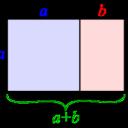Yahoo Answers is shutting down on May 4th, 2021 (Eastern Time) and beginning April 20th, 2021 (Eastern Time) the Yahoo Answers website will be in read-only mode. There will be no changes to other Yahoo properties or services, or your Yahoo account. You can find more information about the Yahoo Answers shutdown and how to download your data on this help page.
Trending News
Question about Lines and planes in Calculus?
Is the line through (-4,6,1) and (-2,0,-3) parallel to the line through (10, 18,4) and (5,3,14) ?
i have no idea where to even begin. i was trying to find each lines parametric equations, but that didnt get me anywhere as far as i know. im lost, please help!
3 Answers
- RobertLv 69 years agoFavorite Answer
Find the direction vectors of the lines.
v1 = <(-2 + 4), (0 - 6), (-3 - 1)> = <2, -6, -4> = 2*<1, -3, -2>
v2 = <(10 - 5), (18 - 3), (4 - 14)> = <5, 15, -10> = 5*<1, 3, -2> = -5*<-1, -3, 2>
Does not appear that the direction vectors are constant multiples of each other, therefore the lines ARE NOT parallel
============================================================================
- RaffaeleLv 79 years ago
the line AB
A(-4,6,1) B(-2,0,-3)
is parallel to the vector
u = B - A = (2,-6,-4)
the line CD
C(10, 18,4) D(5,3,14)
is parallel to
v = C - D = (5,15,-10)
compute cross product
u⨯v = (120,0,60)
u and v are not parallel because u⨯v is not the null vector
- dennisLv 69 years ago
The equation of the first line is r = (-4, 6, 1) + t(2, -6 ,-4) . (2,- 6,- 4) is obtained by subtracting ( -4, 6,1) from (-2, 0, -3)
The equation of the second line is r = (10, 18, 4) + l(5, 15, - 10).
Since the direction vector (2,- 6,- 4) = (1,-3, -2) and (5, 15, - 10) = (1, 3, -2) are not parallel it follows that the two lines are not parallel.( Two vectors are parallel when one is a multiple of the other.)



